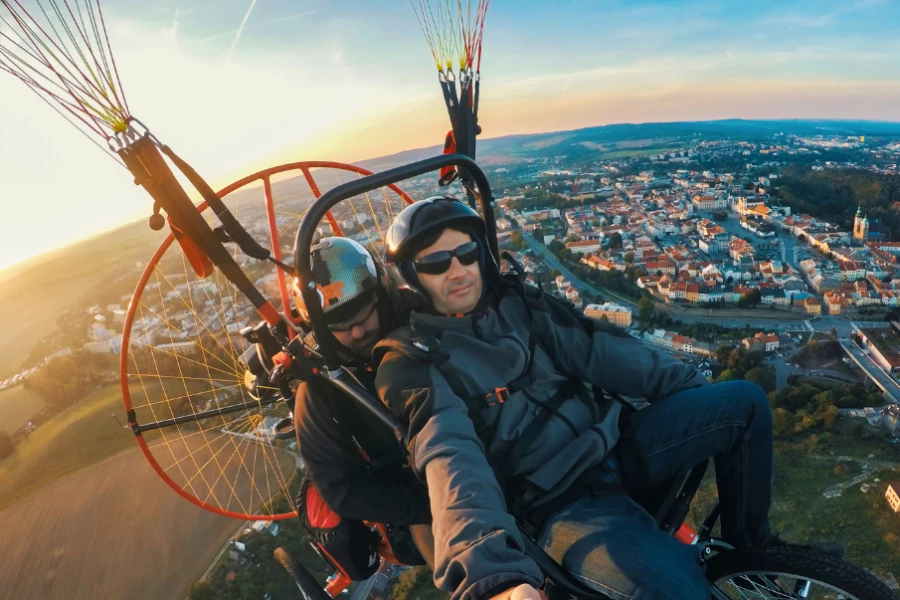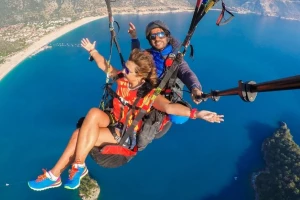- SPORTIVE
- 1 year before
Paramotor - All About Motorized Parachute
We have compiled all the information you need to know about paramotors, popularly known as motorized parachutes in this article for you. Paramotor history
-

- 1 year before
- Category: SPORTIVE
- Published: 01/08/2023

Paramotors, also colloquially known as motorized parachutes, offer a new and exciting method of flight. Combining the ease of a parachutist with the power of an engine, these compact flying machines continue to gain popularity day by day among aviation enthusiasts and explorers. In this article, we will delve into the fascinating history of paramotors, investigate their mechanics, and discuss their use and safety.
The
The
Paramotors can be traced back to the end of the 20th century, at that time fans were looking for a more portable and accessible form of flight. Inventors such as Mike Byrne and Glen Bradley developed the concept of the powered parachute in the early 1980s. These pioneers experimented with a variety of backpack-mounted engine and parachute wing configurations.
In the mid-1980s, advances in materials and technology led to the introduction of the first commercial paramotors. The development of paramotors in terms of design, materials and safety characteristics made them a viable option for recreational flights.
Start of Flight
Paramator Takeoff and Landing: One of the great advantages of
Like flight, landing is a fairly simple process. The pilot gradually reduces power and descends down while controlling the blade's drop speed with brake inputs. This gentle approach to descent makes paramotors suitable for use in a variety of off-road areas.
Paramotors have a wide range of applications and uses. Among them, the most common are:
Recreational Flight: A large number of fans enjoy the freedom and excitement of paramotoring as a pastime.
Aerial photography and film shooting: The precision with which paramotors can fly at low altitudes makes them an ideal platform for capturing exciting aerial images. You can often see it in Historical Places.
Search and rescue operations: Since paramotors can access inaccessible or remote areas, they are valuable tools for search and rescue missions.
In some regions, paramotors are used for agricultural purposes, for example, for plant pollination and aerial surveys.
Paramotoring has become a competitive sport with events including slalom races and international races.
Paramotoring can be an exciting experience, but safety should always be a priority. In many countries, pilots are required to undergo appropriate training and obtain a license. They must have knowledge of weather conditions, aviation regulations and emergency procedures.
In addition, pilots must wear protective equipment such as helmets, armor, and backup parachutes. Regular equipment inspection and maintenance is necessary to ensure optimal performance and reduce the risk of accidents.
To summarize in general, paramotors have evolved significantly since their inception, offering adventurers a unique perspective of the world from above. Combining the excitement of paragliding with the freedom of engine-powered flight, the popularity of these versatile aircraft continues to grow. Paramotoring promises to be an exciting and accessible form of aviation over the years as technology and safety standards advance.



Write Comment